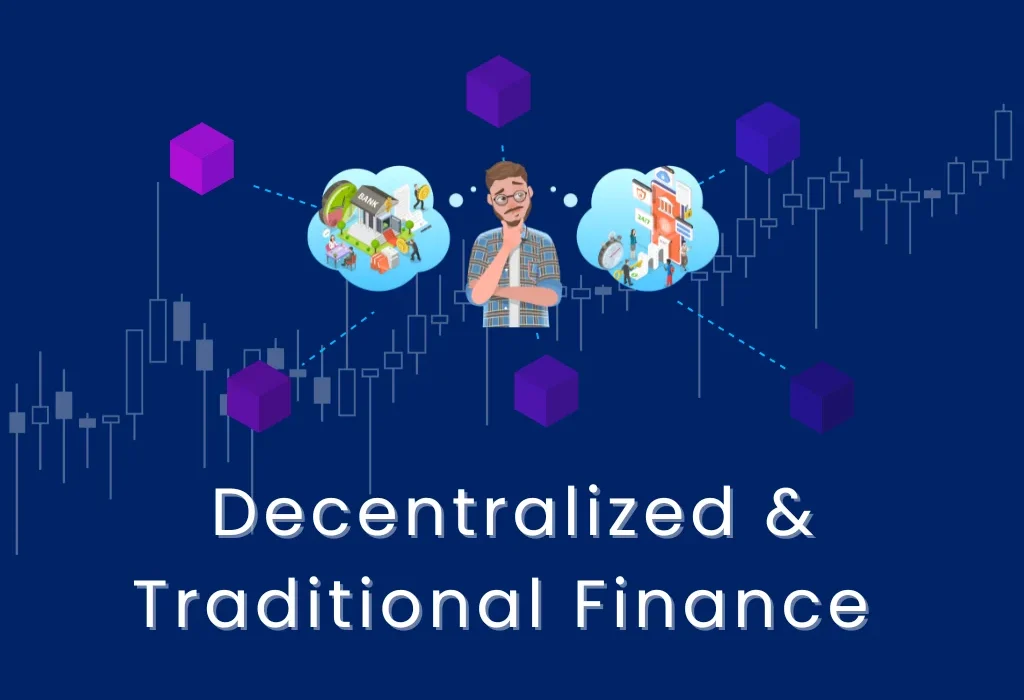Decentralized Finance (DeFi) is transforming not only the way we use financial services but also the very idea of what financial stability is, itself. This very innovative and also bank-lite finance does not require central financial intermediaries such as brokerages, exchanges, or banks that offer traditional instruments. Rather than that, smart contracts are used on blockchains for the most purpose, with the most prominent being Ethereum. DeFi platforms permit people to invest funds from other people, guess the price movements on various assets using flexible derivatives, swap crypto coins, to insure against risks, and receive interests in the forms of savings accounts. In this article, I will describe the impact of DeFI on traditional finance considering its both visible advantages and difficulties existence.
The Rise of DeFi Decentralized Finance
Defi Decentralized Finance has begun to experience a spectacular stage of adaptation and development since its appearance, and the values in its accounts and applications increased to mind-boggling numbers. This is the case for processing power and memory needed to sustain smart contracts, while its governance is decentralized, no single entity is needed to oversee the ecosystem. These financial technology advancements, which promise to make financial services more accessible globally by leveling the financial playing field for people who are underserved by the traditional financial systems, also deliberately strive to eradicate social protection for those who are financially excluded.
Impact on Traditional Finance
Competition and Innovation
DeFi Decentralized Finance has caused a considerable impact on the finance sector as it is pushing the traditional finance titans to introduce innovations and seek a way to adapt to this cryptocurrency emerging field. It provides an impetus way of transaction that is instant, transparent, and inseparably cheaper than the traditional way. As evidenced by DeFi lending systems which do not require credit checking but offer loans according to the real-time value of collateral, successes in this area have been proven.
Accessibility and Inclusion
Defi Decentralized Finance can contribute considerably to the growing gap as one of its biggest advantages is the inherent financial inclusion. Sometimes traditional financial systems are rejected by major parts of the world’s population; they are denied credit access due to a lack of documents, or credit history, or because they live in regions with bad financial systems. With DeFi available to anyone with a world internet connection, approximately millions of people can be connected to the financial ecosystem offering services such as loans and custody, interest rates included.
Transparency and Security
The settled blockchain technology enabling DeFi Decentralized Finance creates a situation where each transaction is see-through and unchangeable. These can push down a sharp fall in fraud and corruption, which happens since there is an open register for all transactions. On the one hand, technology is beneficial, but on the other hand, it has certain dangers. The fact that blockchain is unchangeable; if there’s a flaw in the smart contacts and the exploitation, it leads to such a misfortune, and that centralized nature of these platforms does not make them a risk for these losses.
Challenges for DeFi
Scalability
The scalability issue is one of the main problems faced by today’s DeFi Decentralized Finance. As the number of trans conversely, the cost of transactions (Gas fees on Ethereum, for example) will go up, making the speed of the transactions drop to a halt. While this creates a considerable hurdle for DeFi on a massive scale against centralized financial instruments, it also opens new vistas of innovations for DeFi.
Security Concerns
While blockchain is generally secure, DeFi Decentralized Finance is not immune to risks. The smart contract of DeFi applications may contain security weaknesses that a hacker can take advantage of to steal millions of dollars. Moreover being a bit more complicated situation with the decentralization of platforms often there is no recourse and no chances for those who have lost money or property when scammed or stolen.
The Future of DeFi and Traditional Finance
The relationship between DeFi and traditional finance is not necessarily adversarial. While it may seem that there is a lack of harmony, there may be a possibility for integration. In addition, older financial institutions have begun to realize the impact of blockchain technology with DeFi Decentralized Finance principles and how it can improve the work of their structures. For instance, central banks are about to introduce a digital currency, CBDC, and some banks are examining blockchain technology to enhance their security and transactional effectiveness.
Part of this current status is DeFi’s upward trend and further possibilities of changing the current financial identity beyond recognition. Despite the prospect of threats posed to the status quo of traditional financial systems alongside the emergence of opportunities for growth in technology, inclusion, and advancement of the current financial systems, I remain positive and confident that CBDCs can coexist with conventional finance as the benefits at the end of the day far outweigh the flaws of the new financial order. The factors that lead to the solution sustainability are mainly scalability and security of the solution together with managing the wicked regulatory landscape. Still, with time, DeFi development may become a contributor to the traditional finance system, resulting in a more inclusive, efficient, and secure financial environment.



12 Comments
Comments are closed.